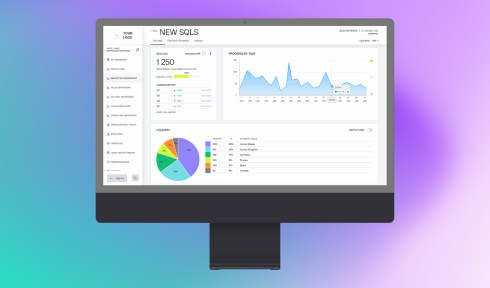Creating a product requires careful planning, a qualified development team, a proper understanding of customer needs and how to meet them in practice. Whether you manage a greenfield project or jump into an ongoing one, there are always some hidden details you need to uncover at the early stages of project development. One of the contributing factors that define your product’s success is your ability to predict customer expectations.
Empathy mapping, buyer personas, and Value Canvas Proposition (VPC) are common practices that are actively used to learn more about customer behavior and attitudes as well as to ensure consistent product improvement.
Let’s look at each of them to know how you can leverage these activities for your business.
1. Empathy Map
An empathy map is a collaborative visual tool designed to gather the most essential insights into what users are most likely to expect from your business. It is not an alternative to journey mapping as its purpose is to give a focused view of what users are thinking and feeling about a specific product or service. The best time to introduce an empathy map is at the stage of creating buyer personas. After gathering the basic knowledge of customer needs, empathy mapping allows you to present it in a systematic manner. You have to group your observations into four quadrants, each section aiming to capture the user’s feelings, thoughts, questions, and actions about the product and/or service of interest. The empathy map can be based on different sources: user interviews, field research, diary studies, listening sessions, etc. Regardless of what you prefer, ultimately, you have a visual document with key ideas about your customer’s pain points and wants.
An empathy map is meant to answer and clarify the following:
– What does the customer think and feel?
– What does the customer see?
– What does the customer hear?
– What does the customer say and do?
– Customer pain points and fears
– Customer hopes and aspirations
Let’s take Airbnb as an example and imagine what their empathy map might look like.

The advantage of an empathy map is that it is easily customizable in case the target audience changes its preferences. Its application in B2B market research leads to a clearer sense of what the user wants to acquire, which allows the vendor to provide the right customer experience in the long run.
2. Personas
Alongside empathy maps, market research analysts use buyer personas to better read customer needs. Creating a persona is a popular practice aimed at establishing empathy with the target users. A buyer persona is a fictional character that describes the major characteristics and behavior of potential customers. Unlike empathy-mapping, the buyer persona is a larger concept. It does not only explore WHY the user might want one or another product and/or service but also pays attention to the buyer’s role, position, intentions, strategy, and other factors that lie beyond the customer’s emotional attitude towards a potential purchase.
The following factors are generally taken into account when identifying the buyer persona: demographics, lifestyle, goals, pain points, goals, experience with market competitors, consumer behavior and activity, and possible pain relievers. But you can consider any other factor in the user’s environment that can impact their buying decisions.
Let’s guess what Airbnb’s buyer persona could look like.

In brief, the buyer persona’s role is to collect the most essential information that shapes the consumer’s decision-making process and lets product owners understand customer needs more clearly.
3. Value Proposition Canvas (VPC)
Value proposition canvas is another visualization tool aimed to ensure the product’s compatibility with customer needs. Its purpose is to align the product’s value with consumer wants and desires. VPC is made of two components: Customer Profile and Value Proposition. As the name implies, the Customer Profile is meant to outline the buyer’s fears and the benefits they would like to get, while Value Proposition dwells on the value customers get with the product or service. This value consists of possible pain relievers, customer gains, and a range of products and services that have the potential to fit with customer wants.
After you have managed to identify customer needs, you need to see how many matches there are between the Customer Profile and Value Proposition sections. If there are matches in every section, it means that your thinking is correct, and it is sensible to improve your product and/or service with regard to this Canvas.
However, you should keep in mind that Canvas is just your assumption. So before changing your business value, you need to make sure that your VPC is valid by interviewing your customers and gathering their feedback on whether your business value indeed works for their customer needs.
Here is a typical VPC that demonstrates the order in which it should be interpreted.

Now let’s imagine what Airbnb’s VPC might look like.

VPC is fit for both start-ups and mature businesses. It is an effective way to come up with new business ideas and see whether they have the potential to win your customer’s heart. The main point is that you should stay unbiased when creating assumptions and possible solutions for your audience and interacting with your audience in interviews.
Empathy mapping, buyer personas, and Value Canvas Propositions are all helpful tools that can be of much use to different business-related specialists. Using one of them allows discovering strengths and weaknesses about your products and/or services as well as revealing more essential information to leverage in decision-making.
Related Experience

For Further Information
Product improvement is a continuous business process that happens in both small and large-sized companies. Revealing flaws and imperfections is critical to both small and large-sized companies if their aspiration is to keep their leading positions in the market. If your business objective is to design a cutting edge digital product to expand your market share, contact Computools’s team via info@computool.com to find out the best way of reading and matching your customer needs through custom business software.

Computools
Software Solutions
Computools is a digital consulting and software development company that delivers innovative solutions to help businesses unlock tomorrow.









“Computools was selected through an RFP process. They were shortlisted and selected from between 5 other suppliers. Computools has worked thoroughly and timely to solve all security issues and launch as agreed. Their expertise is impressive.”